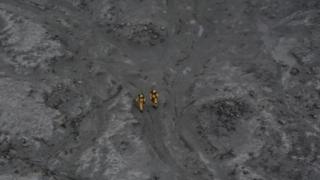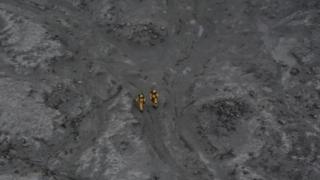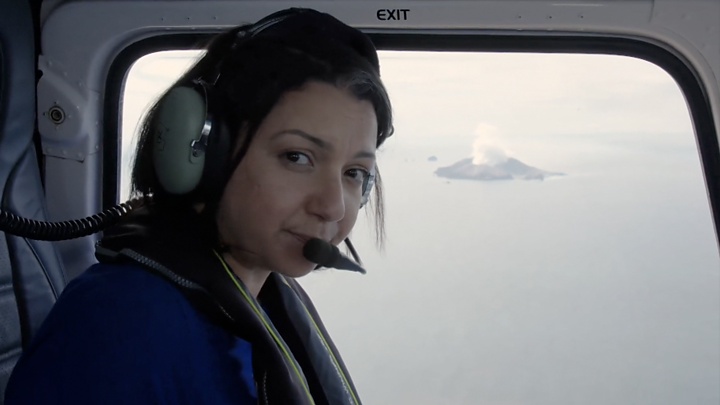New Zealand volcano: Divers deployed to find last two missing bodies
Two bodies are missing as six are airlifted off the island – despite the risk of another eruption. …

 Image copyright NZ Police
Image copyright NZ Police New Zealand police have deployed divers to look for two bodies near White Island volcano – after six bodies were retrieved in a recovery operation.
The volcano erupted on Monday with 47 people there. Eight people were missing on the island, presumed dead.
Another eight have already been confirmed dead and 20 remain in intensive care with severe burns.
The retrieval on Friday was launched despite the risk of another eruption.
The recovery of the bodies from White Island, also known by its Maori name of Whakaari, was delayed over safety concerns for the members of any search operation.
How did the recovery unfold?
On Friday morning, a “high-speed” retrieval to get the bodies was launched – even though the risk remained unchanged.
Going in, authorities knew the location of six of the missing and those bodies were airlifted off the island.
A team of eight specialists from the New Zealand Defence Force flew by helicopter to the island and spent four hours retrieving the bodies.
They were taken to a naval patrol boat and then brought back to the mainland.
“Unfortunately the recovery option is not over as two people remain unaccounted for,” Police Commissioner Mike Bush said in a statement.
“We know at least one body is in the water and divers are currently attempting to recover this body.
“We are making every effort to locate and recover the two remaining deceased.”
What was the danger?
Volcanologists warned that if the volcano erupted while they were on the island, the team could face magma, superheated steam, ash and rocks thrown at high speed.
GeoNet, New Zealand’s geological hazard information site, said on Thursday there was a 50-60% chance of another eruption on Friday.
Mr Bush said it was a dangerous mission for those involved.
“The environment that those staff encountered was unpredictable, challenging and those staff showed absolute courage in order to ensure that those six people were returned to their loved ones.”
The specialists from the New Zealand Defence Force who went to the island were kitted out with protective clothing and breathing apparatus.
During the operation, a geologist analysed real-time data to assess whether the mission needed to be aborted.
Earlier on Friday, Deputy Police Commissioner John Tims paid tribute to the retrievers.
“I would like to acknowledge the recovery team for their efforts and the bravery they have shown today,” he said.
He also offered his “thoughts and prayers” to families of those killed at what he described as a “tragic and harrowing time”.
How were the others saved?
Of those on the island when the eruption happened, 24 were from Australia, nine from the US, five from New Zealand, four from Germany, two from China, two from the UK, and one from Malaysia.
After the eruption, most of the visitors were taken off the island in dramatic rescue efforts.
Some tourist boats already on the way to the mainland turned back to take in those stranded.
Meanwhile, commercial pilots headed back to the island – as the eruption was ongoing – to look for survivors.
Many of those who made it off the island were severely injured and burnt.

Media playback is unsupported on your device




